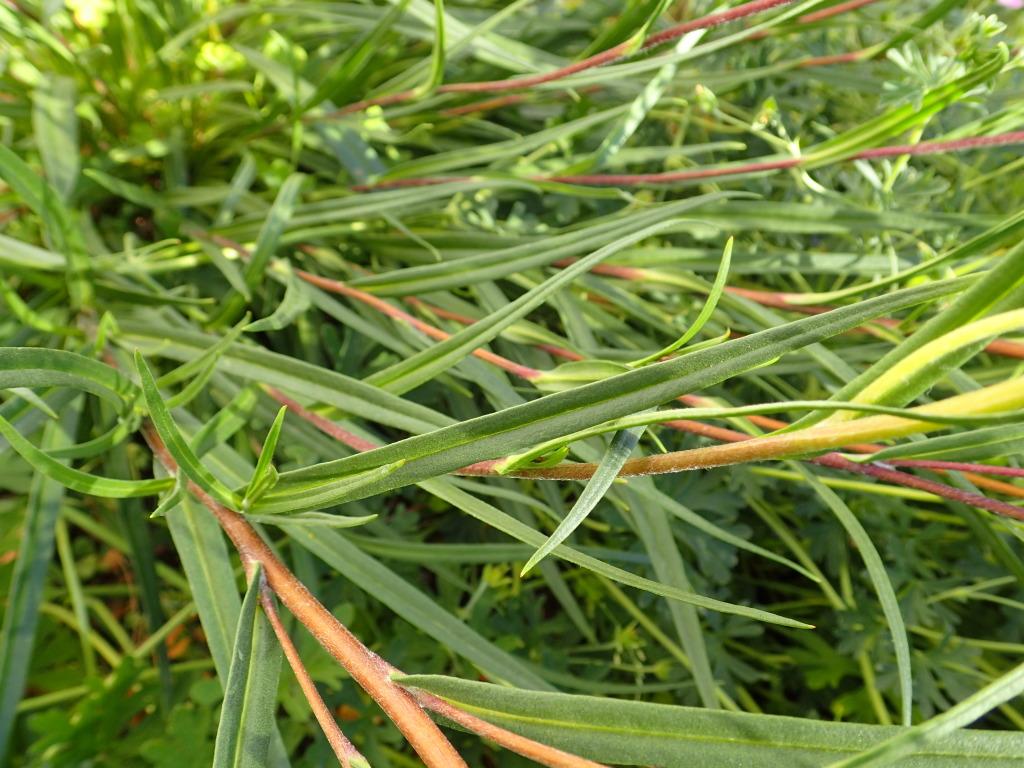Podolepis linearifolia
Jeanes Basalt PodolepisErect, simple or rarely sparingly branched, herb to 60 cm high, renewed annually from thickened persistent rootstock; stems sparsely woolly or hispid, glabrescent with age. Leaves virtually glabrous, margins flat to revolute, entire; basal leaves more or less linear, 5–17 cm long, 3–6(–10) mm wide, petiolate, base amplexicaul, apex acute; cauline leaves linear, 1–8 cm long, 1–4(–6) mm wide, sessile, stem-clasping, apex acute to acuminate. Capitula hemispherical, mostly 20–30 mm diam., solitary or a few in loose cymes; peduncles 2–8 cm long; involucral bracts with linear, glandular claws; lamina more or less ovate, scarious, virtually flat, smooth, shiny, apex long-acuminate to aristate; intermediate bracts 7–15 mm long, with claws shorter than the lamina; inner bracts long-clawed. Florets bright yellow or orange; ray florets 20–40, 10–30 mm long; disc florets numerous. Cypselas 2–3 mm long; pappus bristles 20–40, shortly connate at base, 6–9 mm long. Flowers Sep.–Dec.
VVP, VRiv, GipP, OtP, Gold, CVU, NIS. Also SA, NSW. Usually grows on heavy clay soils in grasslands but also recorded for grassy woodlands, open forests and around swamps. Two old collections purportedly from the Mornington Peninsula and the Wimmera are of doubtful provenance.
Plants from plains country north of Bendigo and around Wangaratta differ slightly from those of more southerly localities in sometimes having slightly broader (3–6 mm wide) cauline leaves.
Podolepis linearifolia is readily distinguished from P. jaceoides by its mostly narrower basal leaves, generally smaller capitula, narrower claws and longer pointed apices on the intermediate involucral bracts.
Jeanes, J.A. (1999). Asteraceae. In: Walsh, N.G.; Entwisle, T.J., Flora of Victoria Vol. 4, Cornaceae to Asteraceae, pp. 652–666. Inkata Press, Melbourne.
 Spinning
Spinning
